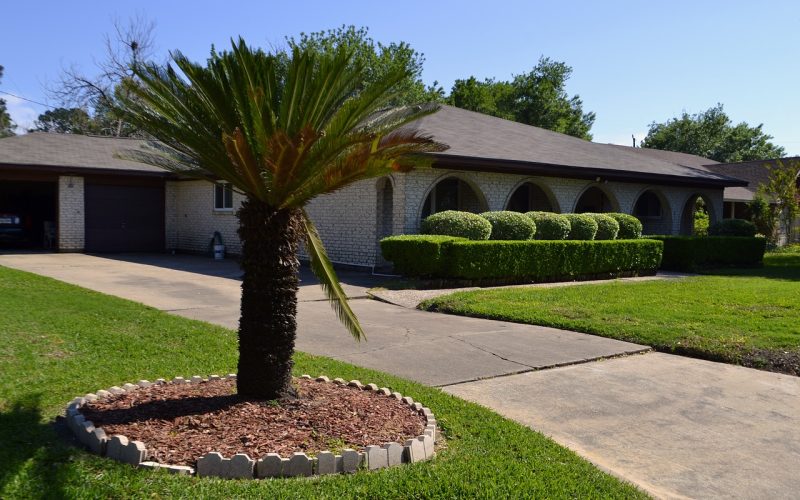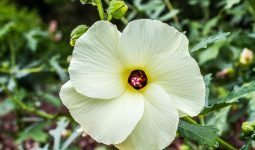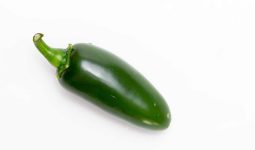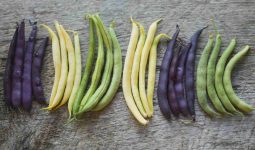There are different types of grass in Texas, and they all have unique attributes.
Texas has a beautiful climate that is considered reasonably dry. Some regions experience high humidity more than others, and sometimes, the season can be hot or cold.
Different grasses are found in various locations because of certain conditions peculiar to them. This article will explore the different types of grass in Texas.
Types of Grass in Texas
1. Centipede Grass
Centipede grass, also known as Eremochloa ophiuroids, is a conventional grass and quite different from the other types of grass in Texas.
As the name suggests, the blades of centipede grass grow sideways, naturally flat, and look like little centipedes crawling along the ground. The grass is available as seed and sod and comes in relatively few varieties.
Centipede grass is relatively easy to maintain and control around sidewalks and when it’s in flower beds. Hence, it’s ideal for homeowners looking for a low-maintenance lawn.
Because of how it grows, the grass looks great even when it hasn’t been cut for a while. It grows slowly and requires little fertilizer and infrequent mowing.
Centipede grass is considered contentious because, compared with the other grass species, it does not tolerate weeds and can withstand most Insects and diseases. More so, centipede grass can tolerate light shade and thrive well in the various climates of Texas.
Centipede grass can be drought-resistant, but that doesn’t mean it likes dry weather. They can also grow in low-fertility soil, requiring lots of water and soil with a pH of 6.0 to 6.5 for best results.
Despite its beautiful attributes, grass also has its cons. One is that, because of its flat nature, it does not tolerate prolonged drought and traffic well.
Another con is its outlook; it is not as attractive as other types of grass since its leaves are slightly coarse. The coarse nature requires that a sharp mower blade be used to trim it properly.
2. Bermuda Grass
Bermuda grass is also among the types of grass in Texas and is considered one of the most popular grass here. The grass also comes in different varieties, making it ideal for the various climates in the state.
Its name derives from the fact that it was introduced to Texas from Bermuda. The grass is called devil’s grass, alluding to the famous Bermuda Triangle.
In keeping with its name, the grass has the strength of a devil and can survive extreme temperatures and drought conditions.
It can grow as deep as 2 meters, allowing it to thrive when water is inadequate. Moreover, the grass also endures foot traffic and glaringly tells you it is here to stay no matter how hard you trample on it. The grass performs best in coarse sandy soils, although it can tolerate most soil types.
Bermuda grass strives very well in sunny conditions and can handle a hot season better than St. Augustine or Fescue grass.
As mentioned earlier, they come in different varieties; some are denser, thicker, and more pleasing, like the hybrid Bermuda grass. Nevertheless, all the varieties share one distinct quality.
They are all aggressive. They spread with weed-like efficiency and take root firmly. Because they grow quickly, they are easy to recover from heavy use or injury.
Despite all the praise for this famous grass, it has a downside. It does not do well in shady lawns, i.e., areas that do not receive full sunlight. Another downside to this grass lies in its strengths.
Because of its aggressive nature, it can easily get into flower beds and gardens. It plagues flowers and other plants and takes deep root contours, making eliminating and expending resources difficult.
Nevertheless, many love it because it grows fast and is drought-resistant.
3. Buffalo Grass
Buffalo grass is a very popular grass among the different types in Texas. It has the widest use span in Texas because it is native to the state and can be found in almost every part of it.
Like Bermuda grass, buffalo grass does well in heat and sunshine. It is also drought-resistant and can handle some of the state’s warmest temperatures.
Although it grows well in full sunlight, it can tolerate partial shade too. It is pretty easy to maintain since it grows naturally in the state.
It does not grow as fast as Bermudagrass, so it requires limited mowing. One unique attribute of this grass is that it can be allowed to grow long for a natural “prairie” look.
Better still, one can mow it regularly for a conventional look. Another unique trait of this grass is its ability to adapt to various soil types. Nevertheless, it grows best in alkaline and low-fertility soils.
The grass also comes in various varieties, in seeded or sod form. Each has a unique attribute that makes it strive more in certain parts of Texas than in others.
But unlike the Bermuda grass, buffalo grass isn’t aggressive, and weeds with a lot of water can easily infest it. Another downside to this grass is that it does not tolerate foot traffic well.
4. Fescue Grass
Fescue Grass is known for its fast-growing ability and tall and thin nature. It’s a great choice for individuals who want a lawn characterized by longer blades.
When left on its own, fescue grass grows tall and makes billowing waves as it’s being blown by the wind, which is a beautiful sight to behold.
The grass is known as “cool” because it survives well in cooler and shady climates and can even grow in complete shade. It is easily affected by extreme heat and excessive sunlight, so it can’t be found in many parts of Texas.
The grass also comes in various varieties; some are more tolerant of heat/ drought and can survive on different soil types than others.
The grass requires attention during the first few years of sowing, and it may even become a bit hardy and tolerant of Texas heat after some growing seasons. More so, it can be planted in seed or sod form.
One unique attribute of this grass is that it can remain green all year round in North Texas because it is very cold-tolerant.
So, in winter, it may not grow much ( which saves you the stress of mowing), but it will undoubtedly stay green and give the home an aesthetic look, which is why many homeowners love it.
A downside to this grass is that it is not ideal for regions that experience scorching and dry summers. Also, like the centipede grass, fescue grass is not suited to heavily trafficked areas.
5. Zoysia
Zoysia is also one of the most common types of grass in Texas. It is naturally neat, short, and coarse.
The grass is quite difficult to establish and maintain because it grows slowly, but once established, it is beautiful.
More so, it doesn’t just look great but also feels good. Since zoysia grass takes time to take root and grow dense, it is mainly grown in sod form to spread faster.
Besides, Zoysia grass is not readily available in seed form, which is why it is a bit more expensive compared to Bermuda and St. Augustine grass.
Another unique attribute of this grass is that since it grows thick and slow, it is not easily bothered by weeds or other pests. This makes maintenance a piece of cake, as weeds and fungus won’t be easily found here. More so, it will be mowed less, too.
The grass does well in warm weather, requires low water once established, and handles drought well, making it a great choice for athletic fields, lawns, and commercial landscaping. It can even survive in shady conditions but goes dormant during winter.
The grass is also available and grows in diverse soil types and weather conditions. The downside to this grass also lies in its unique attributes.
Remember, we mentioned earlier that the grass blades are coarse, grow slowly, and are naturally neat and short.
This means that the grass should be mowed at a height of 1 inch, which is troublesome for some mowers. Besides, the coarse and stiff nature of the grass makes it hard on machinery.
Another weakness of this plant is that it takes time to recover from damage since it grows slowly. This also means that mistakes or faults tend to stand out.
Nevertheless, the grass can also handle heavy traffic, like Bermuda grass.
6. St. Augustine
St. Augustine grass is another wonderful type of Texas grass. It is also known as carpet grass and is sometimes called Charleston grass.
The grass is popular in Texas and can be easily found in different parts of the state because it is versatile and easy to grow. Like Bermuda grass, it is simple and not as expensive as Zoysia grass.
The grass has a coarse texture and looks stunning and elegant. It is usually used for lawns in residential neighborhoods for aesthetics, and it has a signature blue-green color and thick and broad blades.
Although the grass is aggressive, like Bermuda, it is less drought-resistant. It gets pretty thirsty and requires a good water supply for optimum yield.
However, if it is irrigated regularly, it will flourish quite well. Nevertheless, one should be careful here to avoid making the area waterlogged.
St. Augustine, when it is waterlogged, is vulnerable to root rot. Root rot is a sort of fungal disease that causes discoloration of the grass and can even lead to the death of the grass over time.
The grass grows best in the shade, so if you have trees around your house, fear not; you will still achieve a lush green lawn. Nevertheless, it can also do well in other atmospheric conditions.
The grass also comes in a variety suited for the various climate conditions in different parts of Texas and is available in seed or sod form for cultivation. Some varieties are durable, hard, and can even recover from injury.
The downside to this grass is that it is easily infested by weeds and pests, making maintenance tasking. It is also not tolerant of high traffic.
7. Seashore Paspalum
Seashore Paspalum is one of the different types of grass in Texas, and it tells you so much from its name alone.
As the name suggests, this grass can grow naturally along coastal regions. Moreover, it is saltwater tolerant, giving it notoriety for sustainability. The grass can be cultivated in several ways, in seed, sprig, or sod form.
The grass is coarse and dense, making it ideal for the sports field. Its ability to withstand moderate to high traffic indicates that it can withstand this.
The grass is drought tolerant and strives well enough during the hottest summer; hence, it can grow in warm regions. Compared to the Bermuda grass, the grass is tolerant of salinity in soil and water irrigation and needs less nitrogen fertilizer.
The downside to this grass is that it does not tolerate long periods of low temperature. Also, where the salinity of irrigation water is a concern, it will require high maintenance.
8. Rye Grass
Among the different types of grass in Texas, ryegrass is generally known as temporary grass because that is precisely what it is.
The grass is often temporarily sown in conjunction with Bermuda in between seeding seasons to give the lawn a green color during winter.
They are sometimes planted on bare ground to cover plants and prevent erosion until a durable lawn is installed.
The grass also germinates fast and looks attractive. It is shade tolerant, thrives in cooler months, and is mainly used during winter since it tolerates cold.
Although it can tolerate drought, it would need additional irrigation and can’t survive in temperatures around 30˚ F or lower.
The downside to this grass is that it is temporary and can’t survive the hot summer of Texas.








